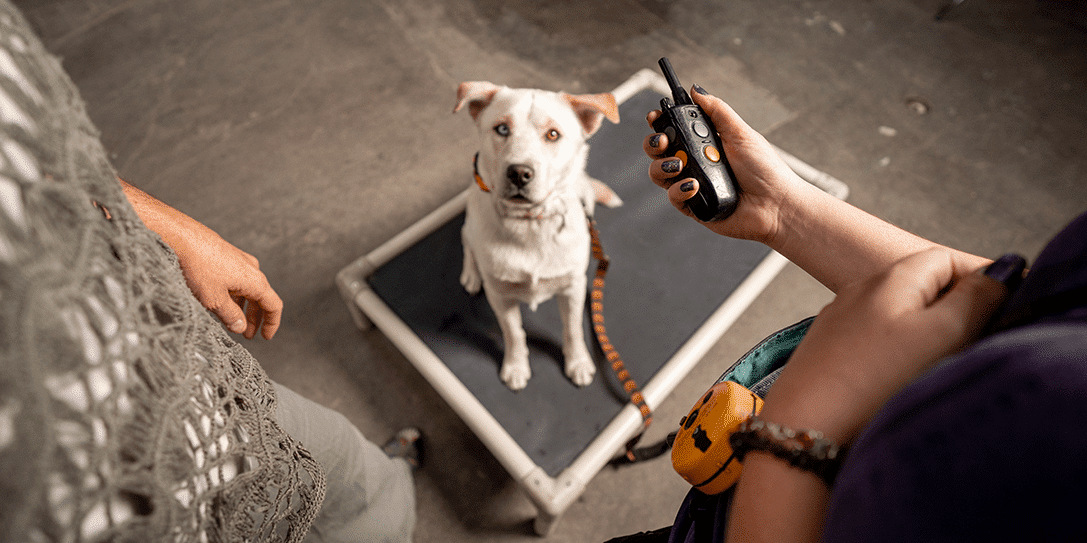
Summer is the season for getting outside and people around the Reno/Tahoe area really like to cut loose and run free! As soon as the warm weather hits, the trails are full and campgrounds are booked. Being able to get out in the wild is something people specifically move to this area for and, if you’re a dog owner, chances are you want your dog to join in on the fun.
Many dog owners love the idea of being able to let their dog run free and share in that same free spirited lifestyle. There is just one problem—the leash. Leashes are essential for keeping your dog safe in many situations, but when you step out on the scene of that wide open valley or hit the trail head of that glorious never ending pathway, the leash is a total buzzkill. It keeps your dog tethered to you and you to your dog.
The e-Collar is a safe training tool that can give your dog a kind of freedom they won’t ever get attached to the end of a leash. However, many dog owners have fears around e-collars that keep them from introducing their dog to this freedom-boosting training tool. So, in the same way we hit the trail with our dogs, we’re going to take this subject head-on and address the top 5 e-collar myths.
 MYTH 1: E-Collars Shock Your Dog
MYTH 1: E-Collars Shock Your Dog
Let’s just clear this one right up. E-Collars are NOT shock collars. The sensation dogs feel when wearing an e-collar is not a harmful shock but, instead, feels more like a TENS machine like the ones used by physiotherapists on humans. The feeling comes from an electrical impulse that activates the muscle, causing it to slightly tense up. The feeling is one of discomfort, not pain. When training dogs, most dogs are at a stimulation level that is very mild and simply acts as a communication touchpoint, rather than a major physical sensation. It’s like a tap on the shoulder. In fact, the level the average dog responds to is below the threshold of what most humans can even feel.
MYTH 2: E-Collars Make Your Dog Fearful
Dog training should always be done respectfully and humanely. Any training tool can be used in a way that is harmful to a dog. Any trainer who uses tools inappropriately or relies on physical intimidation to train obviously shouldn’t be training dogs. The training tool is only as humane as the human working with it. E-collars are just another training tool. A dog becomes fearful when humans do things to make them feel fear. Period.

MYTH 3: E-Collars Damage Your Dogs Fur And Skin
Some people falsely believe that e-collars work by heating up in a way that burns fur and skin and that simply isn’t true. E-collars are mostly inactive while they are on your dog’s neck and only become active when you push the button on the E-collar remote. This sends a one time signal that activates the pulse and stimulates the muscles. It does NOT have a heating mechanism and works by using a one time electronic stimulation.
MYTH 4: E-collars Are For Lazy Trainers
E-collars are an incredible communication device that allow trainers to communicate with dogs in the moment. We will be the first to admit that this cuts down on a lot of the effort it normally takes to get a dog‘s attention. However, like any respectable dog trainer, trainers at DGA don’t use any tool as a way to make the process easier for us. We select tools based on each individual dog’s need making sure that they are the best match for helping the dog get results. If an e-collar isn’t the right match for a dog (or their owner) we will gladly use other tools. In addition, an e-collar still requires hours of effort and training. Every dog learns in their own way and at their own pace and an e-collar is not a guarantee the process will go any faster or be any easier.
 MYTH 5: E-collars Should Never Be Used On Fearful Or Anxious Dogs
MYTH 5: E-collars Should Never Be Used On Fearful Or Anxious Dogs
An e-collar can actually be a really effective tool for dogs that are experiencing anxiety or fear because of its ability to interrupt emotional responses. When a dog is feeling anxious or fearful it can cause involuntary behaviors like whining, pacing, biting, licking, etc. Because an e-collar allows you to communicate with your dog in the moment, you can interrupt that emotional state with a gentle stimulation. This allows your dog to understand that what they are doing is unwanted and can also interrupt the emotional state to allow them to listen to you and refocus their attention.
E-collars aren’t right for every dog or every dog owner. However, we highly recommend that you look into the facts about e-collars before you eliminate them as a possible tool for your dog. After training hundreds of dogs with the e-collars over the years, we’ve had the privilege of bearing witness to the most amazing transformations. We’ve seen dogs go from hiding in corners to confidently hiking the mountains or go from constantly running away to being trustworthy and dependable trail mates.
If you’re looking to help your dog gain the skills they need to enjoy wide open spaces, consider e-collar training.
